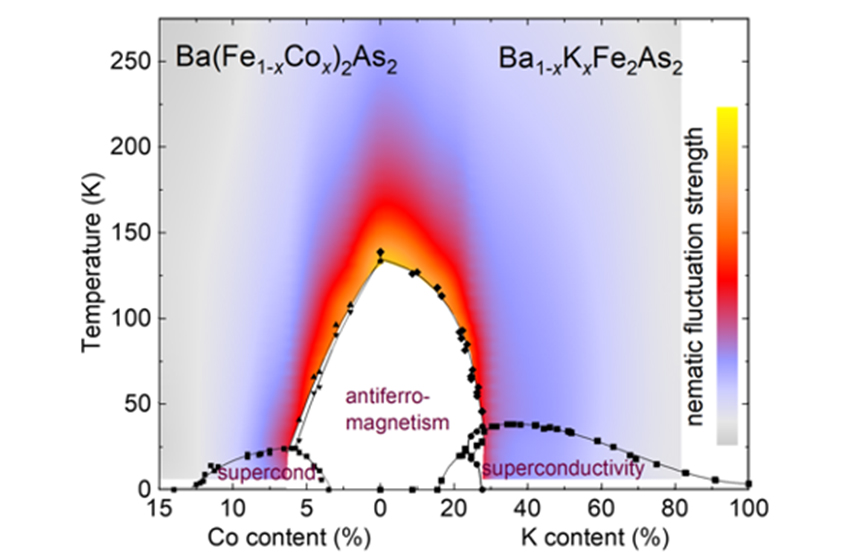Inspired by the editors of the renowned journal Nature Physics, Prof. Dr. Anna Böhmer has written together with three other researchers* about the perspective of research on nematicity in solids.
Nematicity in crystalline solids is a phenomenon that has been the focus of research on materials with electronic correlations for nearly 15 years. In these exotic materials, strong interactions among electrons condition the properties. In nematic materials, electrons behave as if they are no longer spherically symmetric without a clearly identifiable cause. As a result, the properties of these materials have a preferred direction. One class of materials in which nematicity is particularly prominent is iron-based superconductors, which were discovered in 2008. Meanwhile, many exotic superconductors have been found in which nematicity seems to play a role.
Anna Böhmer and her research colleagues belong to a group of young scientists who have completed their PhDs in the first five years after the discovery of nematicity in iron-based superconductors: "Jiun-Haw Chu was involved in the discovery of the strong signature of nematicity in electrical resistance and has shown how this signature can be used to accurately measure nematicity. Ming Yi has discovered how nematicity affects the electronic band structure (the energy levels of electrons in the solid) and Samuel Lederer has shown in theory that nematicity can cause superconductivity. I myself have studied the effects of nematicity on the structural and elastic properties of these materials."
To further expand her research on nematic superconductors, Anna Böhmer was also awarded a Starting Grant from the European Research Council ERC this year.
The article on current research and possible future developments appeared here: https://www.nature.com/articles/s41567-022-01833-3.


